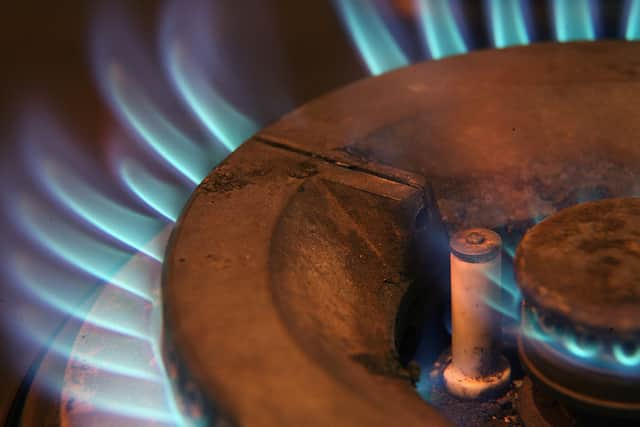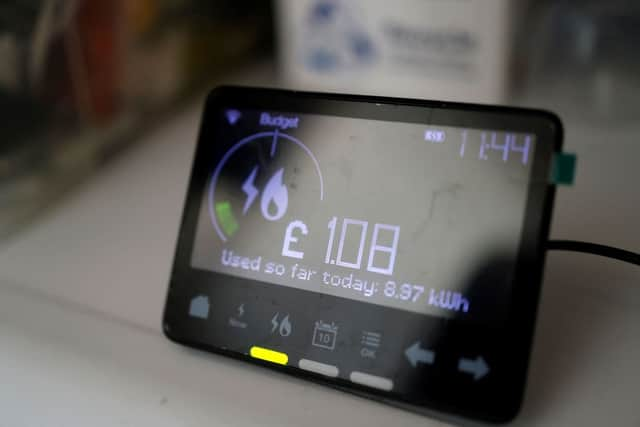Ofgem energy price cap: Why energy bills are going down - what new energy prices limit means for you
and live on Freeview channel 276
Energy bills are set to fall this weekend as Ofgem’s latest energy price cap kicks in.
The energy regulator’s new limit on gas and electricity bills will mean an average household will be in line to save the equivalent of £426 a year (£35.50 a month) compared to exisiting prices. The average annual rate will sit at £2,074.
Up until June, we have been paying the rates set by the energy price guarantee - the government’s energy bills support scheme. However, this is set to be superseded as it is legislated to rise to £3,000 a year - almost £1,000 above the new Ofgem rate. It has been recommended that people submit meter readings ahead of the change.
The news will provide respite from the cost of living crisis, although energy bills will still be around £1,000 (£83 a month) above where they were before the Covid-19 pandemic, according to energy consultancy Cornwall Insight. Energy bills have been one of the main drivers of the record inflation that has squeezed our spending power and eaten into our savings.
So, what is the new Ofgem energy price cap - and why does it mean you won’t be paying as much for gas and electricity?
What is the Ofgem energy price cap?
Ofgem - or the Office of Gas and Electricity Markets - is the UK’s energy regulator. Independent of government, it says it works to keep energy prices as low as possible, protect consumers and drive the UK towards its net-zero target.
Part of its role is to set a cap on what suppliers can charge per unit of gas or electricity for default - i.e. standard variable - tariffs. Variable tariffs are usually more expensive than fixed-rate ones and, before the energy crisis, tended to be followed by the UK’s poorest and most vulnerable households. You would also fall onto one if you’d never switched supplier, your fixed rate term had ended, your supplier had gone bust, or you’d moved house.


But since late 2021, most people have moved to default rates as rising energy prices have meant fixed deals have not been a viable option. Suppliers have not been able to compete with each other as a result of rocketing wholesale costs, while consumer confidence in switching has plummeted given no one has known what the energy bills peak would be.
When you look at your energy bill, the price cap governs the maximum standing charge and price per kWh of gas and electricity your supplier can charge you (although it is currently being superseded by the energy price guarantee because the £2,500 is cheaper than the current Ofgem limit). It does not cap your usage, which can mean you pay more or less for your energy than the average bill figure it gives when it announces a new cap.
How is the energy price cap calculated?
Ofgem determines its energy price cap by calculating how much it would cost a typical energy supplier to supply an average home for a year. It does this by analysing several factors that impact our energy bills, as well as usage and market data over a review period. These include:
- Wholesale gas and electricity costs (i.e. what it costs suppliers to buy energy)
- Network costs (e.g. what it costs suppliers to maintain energy infrastructure, like pipes and wires)
- Social and environmental obligations (for example, the cost of adhering to government climate policies, including green levies)
- Supplier operating costs and margin (roughly 2% of the average bill under the price cap)
- Headroom allowance (an amount that helps suppliers manage unexpected costs, thus theoretically allowing them to offer competitive deals)
- Taxes, like VAT
The figure Ofgem generates is what it would cost the average home for the energy they use over a 12-month period (assuming they use both gas and electricity). The factor that’s driven the major increases to the price cap over the past 12 months has been wholesale costs. These more than doubled between April and October 2022, rising 131% from an average of £1,077 to £2,491 in October.
Market prices then climbed another 28% to £3,177 in January before falling to £2,170 from April. Wholesale prices have cooled thanks to high levels of gas storage in Europe and a warm winter, which has meant people have used less energy than expected.
As well as wholesale costs, the cap has been pushed up over the past 18 months because of how much it cost to move millions of consumers to new suppliers when dozens of energy firms collapsed in autumn 202. Ofgem has also said network maintenance costs have gone up - a consequence of the UK’s inflation woes - while policy costs, like the rise in the warm home discount rebate, have risen.
How is the energy price cap changing?
Ofgem moved from a biannual (i.e. twice yearly) to a quarterly (i.e. four times a year) price cap announcement in August 2022. When it announced the change, Ofgem said it would help “provide the stability needed in the energy market”.
However, this has been superseded by the energy price guarantee, which has set the maximum suppliers can charge consumers for units of gas and electricity at roughly 34p per kilowatt hour (kWh) for electricity and 10.3p per kWh for gas. The government has done this by subsidising energy suppliers so that they can only charge a maximum unit price - i.e. it has shouldered the difference in cost between actual wholesale prices and the level of the energy price guarantee.


While the scheme has shielded consumers from the worst of energy bill hikes - capping the average household bill at £2,500 - the policy was risky given a widening of the Russia-Ukraine war or a freezing winter could have sent wholesale prices soaring, which would have meant the government would have had to pay out more at a time when public borrowing had become more expensive due to Liz Truss’s Mini Budget. Fortunately, the UK has avoided this outcome.
The energy price guarantee’s rate was due to go up 20% in April 2023, but this was delayed until July by Chancellor Jeremy Hunt at the Spring Budget after warnings it would lead to a crippling squeeze on people’s budgets. The rate will climb to an average of £3,000 for households but will be superseded by the Ofgem energy price cap given it will be the equivalent of almost £1,000 cheaper.
While the Ofgem cap is making a comeback, its longer-term future has been a topic of debate in Parliament. MPs sitting on the Business, Energy and Industrial Strategy committee have described it as out-of-date and urged the government to scrap it in a report published in July 2022. They said it should be replaced with a discounted social tariff for the most vulnerable households. But for now, it remains in place.
What level is the energy price cap?
Despite the energy price guarantee, the Ofgem price cap has continued to be calculated as a result of its statutory obligations. It has shown us a) how helpful the government support has been, and b) how much public money it has cost. Here is how average household energy bills projections under the price cap have changed over the past 12 months:
- April 2022: £1,971 (up 54% from £1,277)
- October 2022: £3,549 (up 80%)
- January 2023: £4,279 (up 21%)
- April 2023: £3,280 (down 23%)
On 25 May, Ofgem announced July’s price cap would be £2,074 - a 37% drop on the April to June figure. It means energy prices are heading back towards last April’s figure. It also means the government will no longer subsidise domestic energy bills from 1 July.
In practice, households will see an average monthly saving of £35.50 on their bills. But this will still work out at around £30 a month more than they were during the winter when the government paid out £400 in six instalments to most UK households - although your energy usage is likely to be lower than it was between October and March due to the warmer weather.
The latest rate shows wholesale costs have actually fallen below what they were in April 2022, making up £1,041 of the latest figure. The regulator’s CEO Jonathan Brearley said it was “encouraging” that the market appeared to be stabilising. However, he added that it was “unlikely” prices would go back down to where they were before the energy crisis “in the medium term”.


Energy consultancy Cornwall Insight, which has accurately predicted the cap throughout the energy crisis, said it does “not currently expect bills to return to pre-2020 levels before the end of the decade at the earliest”. But it does think competitive fixed rate deals may become available soon.
Why have energy bills been so high?
Wholesale gas and electricity prices began to soar in 2021 as countries across the world reopened their economies after Covid-19 shutdowns. As well as rising prices, the effect we saw here in the UK was several small energy suppliers going bust.
The start of the Russia-Ukraine war in February 2022 then saw prices rocket even further as European countries who were supportive of Ukraine but reliant on Russian gas scrambled to find alternative sources for their energy needs before Vladimir Putin’s regime cut them off. Russia is the world’s second-biggest producer of natural gas, so any changes in its supply can have a major effect on global prices.
While the UK was not directly dependent on Russian gas, it imports most of its energy from abroad and has little gas storage capacity compared to other nations. So, it was particularly exposed when prices began to climb, which is also one of the key reasons why our cost of living crisis has been so bad compared to other comparable economies.
Comment Guidelines
National World encourages reader discussion on our stories. User feedback, insights and back-and-forth exchanges add a rich layer of context to reporting. Please review our Community Guidelines before commenting.
